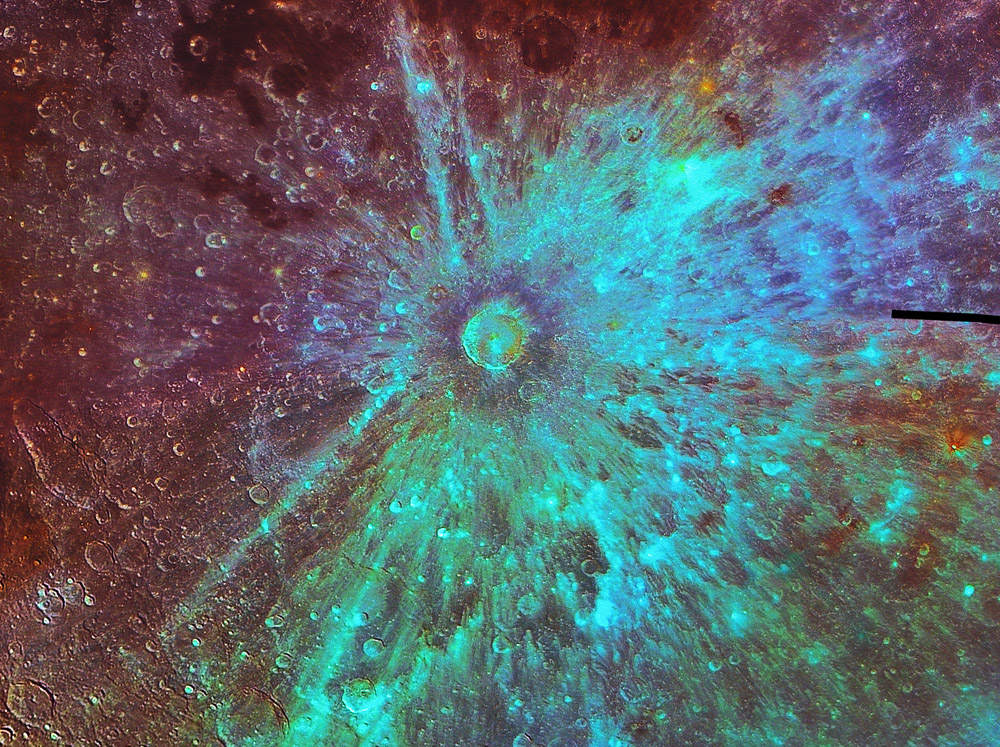March 18, 2024
Green Rays
Originally published March 4, 2014

image by Maximilian Teodorescu, Dumitrana, Romania
Rays are perhaps the least studied of all classes of lunar features. There are important studies of their formation mechanisms and how they age over time, but I am not aware of investigations of their patterns. For example, how should ray patterns be mapped - how could the differences between Tycho's rather bold rays be quantitatively compared to the somewhat wispy rays of Copernicus? Part of the difficulty is in developing a processing technique that clearly separates rays from other features. Max has been experimenting with his color images and has produced this colorful image that effectively defines the main rays of Tycho. In his blog Max describes his processing and some of his observations. He notes how well the image documents the zone of avoidance to the west, showing that the crater-forming projectile came from that direction. It is also amazing that one prominent ray to Tycho's southwest is neither radial nor tangent to the crater. A number of bright ray clots occur, especially the large one called Cassini's Bright Spot northeast of Tycho. Fresh impact craters show up as yellowish spots, but the dark rays of Buch B look like spectacular red fireworks near the right center margin below the dark line of missing data. Also showing as red are the three other dark splotches of Maurolycus A and F and Walther A. Color mapping definitely reveals features that are otherwise difficult to detect.
Chuck Wood
Technical Details
September 30th, 2012 at around 00:15-00:45 U.T. Celestron SCT 11″ F/10 + DBK 41AU02.AS camera + Baader IR-pass 685nm filter. For details of processing see
Related Links
21st Century Atlas charts 13-16.
Max's blog.
Yesterday's LPOD: Moon Over Madrid
Tomorrow's LPOD: A Little Scar
COMMENTS?
Register, Log in, and join in the comments.



